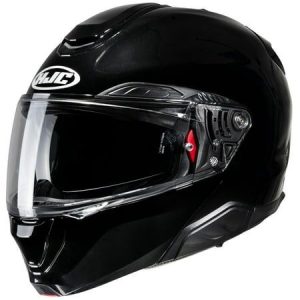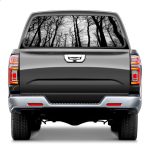Your motorcycle helmet is your essential safety equipment. It’s the shield that protects your head in the unfortunate event of an accident. But a helmet that doesn’t fit properly can be just as dangerous as no helmet at all. An ill-fitting helmet can slip off during a crash, leaving your head vulnerable. It can also be uncomfortable, leading to fatigue and reduced focus while riding.
So, how do you ensure your motorcycle helmet fits like a glove (or, well, a helmet)? This comprehensive guide will equip you with the knowledge to find the perfect fit, prioritizing both safety and comfort on every ride.
Understanding Motorcycle Helmet Fit: Snug, Secure, and Comfortable
The ideal motorcycle helmet fit should feel snug and secure, cradling your head comfortably without any excessive pressure points. Here’s what that translates to:

- Snug: The helmet should feel snug throughout, making slight contact with your forehead, cheeks, and temples. It shouldn’t be so tight that it causes pain or headaches, but there shouldn’t be any significant gaps around your head.
- Secure: When you shake your head from side to side, the helmet should move slightly with your head, but the movement should be minimal. The helmet shouldn’t rock back and forth or easily twist on your head.
- Comfortable: You should be able to wear the helmet comfortably for extended periods. While a new helmet might feel slightly snug initially, it will break in and conform to your head shape over time.
Measuring Your Head for the Perfect Fit
Before diving into trying on helmets, it’s crucial to measure your head accurately. Here’s how to do it:
- Grab a soft measuring tape. Wrap the tape around the widest part of your head, just above your eyebrows. Make sure the tape is level and sits comfortably.
- Take multiple measurements. Repeat the measurement a couple of times to ensure accuracy.
- Consult the manufacturer’s size chart. Once you have your head measurement, refer to the size chart provided by the helmet manufacturer you’re interested in. Most reputable helmet brands will have size charts readily available on their websites or included with the helmet itself.
Head shapes can vary. While the size chart is a good starting point, it’s important to try on different helmets to find the best fit for your unique head shape.

Trying on a Helmet: The Sensory Test
Now comes the fun part – trying on helmets! Here’s what to pay attention to during the fitting process:
- Put the helmet on without tightening the chin strap. The helmet should slide on snugly without excessive force.
- Check the cheek pads. The cheek pads should make gentle contact with your cheeks. You shouldn’t be able to easily pull them out, but they shouldn’t be so tight that they cause discomfort or pinch your cheeks.
- Simulate a head shake. Once the helmet is on, gently shake your head from side to side. The helmet should move slightly with your head, but there shouldn’t be any excessive movement.
- Test the chin strap. Fasten the chin strap and ensure it fits snugly but comfortably. You should be able to fit a fingertip between the strap and your chin.
- Open and close your mouth. A properly fitting helmet shouldn’t pull down on your face or restrict your jaw movement when you open and close your mouth.
Don’t be afraid to spend time trying on different helmets. It’s an investment in your safety, so find a helmet that feels comfortable and secure from the get-go.
Motorcycle Helmet Break-in: A Short-Term Snugness
A new helmet might feel slightly snug initially. This is normal! Most helmets have a break-in period where the padding will conform to the shape of your head, providing a more comfortable fit over time.

Resist the urge to modify the helmet padding. The padding is designed to provide optimal protection. Altering it can compromise safety. If the helmet feels uncomfortably tight even after a reasonable break-in period, it might not be the right size for you.
When Does a Helmet Not Fit? Warning Signs
While a slight initial snugness is expected, there are some telltale signs that your helmet might not fit properly:
- Excessive movement: If the helmet rocks back and forth or easily twists on your head, it’s too loose.
- Pressure points: If you experience persistent pressure points on your forehead, temples, or jaw, the helmet might be too tight or the wrong shape for your head.
- Difficulty putting on or removing: A properly fitting helmet should go on and off snugly without excessive force.
Discomfort During Rides: A Sign to Re-evaluate
Discomfort during rides is another red flag. Your helmet shouldn’t cause headaches, neck strain, or restricted vision. If you experience any of these issues, it’s time to re-evaluate the fit.
Beyond the Basics: Choosing the Right Helmet Type
While a snug and secure fit is paramount for any motorcycle helmet, the ideal type of helmet can also impact comfort. Here’s a quick rundown of the most common motorcycle helmet styles:

- Full-face helmets: These helmets offer the most comprehensive protection, covering the entire head and face. They are a great choice for all types of riding, especially high-speed riding. However, full-face helmets can be heavier and slightly less ventilated compared to other styles.
- Modular helmets: Modular helmets, also known as flip-up helmets, offer the versatility of a full-face helmet with the convenience of a flip-up visor. This allows for easier on and off, improved ventilation during breaks, and easier communication.
- Three-quarter helmets (3/4 helmets): These helmets provide protection for the head and most of the face but leave the jaw exposed. They offer a good balance of protection and ventilation, making them popular for cruising and short commutes. However, they don’t offer the same level of protection as full-face helmets.
- Half helmets: Half helmets, also known as open-face helmets, offer minimal protection, only covering the top of the head. While they are the lightest and most ventilated option, they leave the face entirely exposed and are not recommended for serious riding.
Consider your riding style and needs when choosing a helmet type. If comfort is a major concern, look for a helmet with good ventilation features, a comfortable liner, and a lightweight design.
The Importance of a Quality Motorcycle Helmet: Safety First!
Throughout this guide, the emphasis has been on achieving a comfortable fit. But remember, comfort should never come at the expense of safety. Here’s why choosing a quality helmet is paramount:

- Safety certifications: Look for helmets that meet safety standards set by reputable organizations like the Department of Transportation (DOT) or the Economic Commission for Europe (ECE). These certifications ensure the helmet has undergone rigorous testing and meets specific safety criteria.
- Protective materials: A quality helmet should be constructed from high-impact outer shell materials like polycarbonate or composite materials, along with a shock-absorbing inner liner to dissipate impact energy.
- Visor quality: The visor is a crucial safety component, protecting your eyes from debris and wind. Choose a visor made from scratch-resistant and impact-resistant polycarbonate material. Consider features like an anti-fog coating and a quick-release system for easy cleaning and replacement.
Don’t skimp on your safety! Invest in a quality helmet from a reputable brand that meets safety certifications and is constructed from high-quality materials.
Finding the Perfect Fit: A Rewarding Journey
Finding the perfect fitting motorcycle helmet might take some time and effort, but it’s a worthwhile investment. A comfortable and secure helmet will not only protect you in the event of an accident but will also enhance your riding experience by reducing fatigue and distractions.
So, take your time, try on different helmets, and prioritize both safety and comfort. With the knowledge from this guide, you’ll be well on your way to finding your perfect helmet match!


